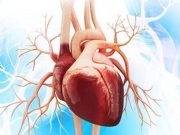Tag: Atrial Fibrillation
Diabetes Patients Less Often Perceive Atrial Fibrillation Symptoms
Those with diabetes and a-fib have worse quality of life and more cardiac and neurological morbidities than those without diabetes
Screening Seniors for A-Fib Reduces Risk for Adverse Outcomes
Reduction seen in combined end point of stroke, systemic embolism, bleeding leading to hospitalization, death
Individual A-Fib Episodes Tied to Recent Alcohol Intake
AF episodes also linked to higher odds of peak blood alcohol concentration, total area under curve of alcohol exposure
Working Night Shift May Up Risk for Atrial Fibrillation
Risk increased for both current and long-term exposure to night shift work regardless of genetic risk for atrial fibrillation
Racial/Ethnic Disparities Seen in Anticoagulant Initiation for A-Fib
Disparities seen among VA patients both for initiating any anticoagulant therapy and for initiating direct-acting oral anticoagulant use
Early Rhythm Control Key in A-Fib and Heart Failure
Reduction seen in composite primary outcomes of CV death, stroke, hospitalization for worsening of heart failure or ACS
Rates of Adverse Events Lower With Apixaban for A-Fib in Older Adults
Apixaban the only direct oral anticoagulant linked to lower adverse event rates than warfarin for patients with atrial fibrillation across frailty levels
Athletes Have Higher Risk for Developing Atrial Fibrillation
Risk greater in athletes younger than 55 years and among those participating in mixed sport versus endurance sport
Preablation Weight Loss Linked to Freedom From A-Fib
Change in weight over preceding year linked to success of catheter ablation for AF at 15 months for obese, nonobese patients
Catheter Ablation Improves A-Fib Outcomes in Racial/Ethnic Minorities
In contrast, much higher event rate seen for racial and ethnic minorities randomly assigned to drug therapy in CABANA trial














